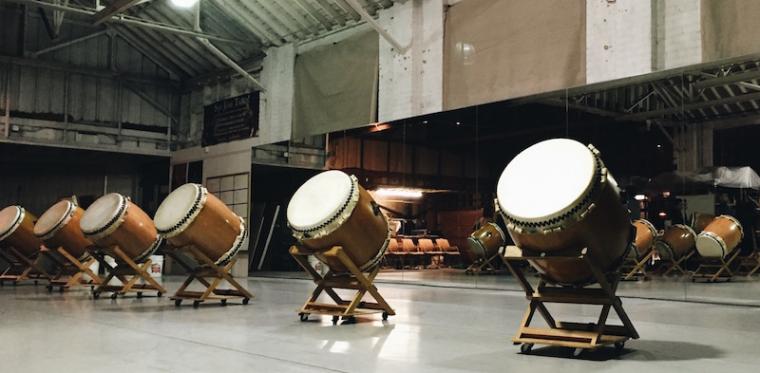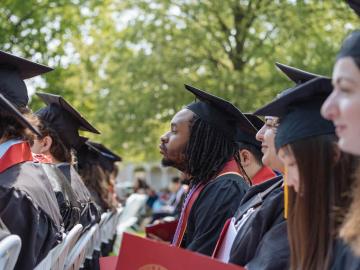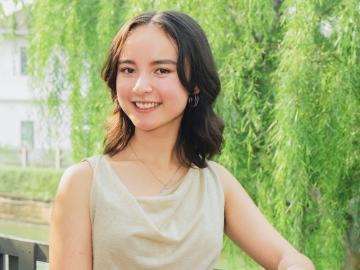Taiko Members Hone Their Craft
February 8, 2016
Amanda Nagy

Three members of Oberlin College Taiko (OCT), a student-led Japanese drum ensemble, traveled to San Jose, California, over winter term to study their craft with one of the oldest-established taiko groups in North America.
Third-year students Matthew Blankinship, Miles Ginoza, and Holly Hoang spent three weeks taking private lessons with members of San Jose Taiko, a premier drumming group that formed in 1973. A relatively modern Japanese art form, taiko literally means “fat drum,” but performers use an array of drum shapes and sizes.
“Our main focus was to study taiko with a professional taiko group, improve our own taiko playing abilities, and bring knowledge back to our student group,” says Hoang, a history major from Ellicott City, Maryland. “This is particularly important because OCT is a completely student-run ensemble. With no artistic director and a rather large turnover as older, experienced members graduate, there is little continuity sustaining the group, and essential knowledge and information is easily lost and or forgotten throughout the years. It becomes increasingly vital that our members are able to take such opportunities—like studying with professional groups, taking workshops, going to performances, or attending conferences—as ways to contribute to the longevity of OCT.”
The trio gained valuable lessons in three, two-hour private sessions with San Jose Taiko members Franco Imperial, Yurika Chiba, and Geoff Noone. They also observed the performing company's rehearsals and attended the recreational and prep classes that the group teaches to local youth. Hoang says they were also fortunate to meet San Jose Taiko founding members Roy and P.J. Hirabayashi.
“They took time out of their days to have conversations with us about taiko drum building and their experiences playing taiko, and they gave us a tour of San Jose Japantown. Meeting them seemed like meeting a celebrity, but more than just a celebrity. We met the two who created the legacy of San Jose Taiko and North American taiko drumming,” she says.
Hoang says the Oberlin group originally reached out to San Jose Taiko with the sole hope of taking lessons, but they left with much more.
“We may have come away with better technique, better form, and better warm-ups and drills, but we also came away with a greater sense of self-awareness, a new understanding of what it means to play taiko (as both an individual and part of a group), a growing respect for the time and labor that makes playing taiko possible, a feeling of rejuvenation from the unbelievable energy we had encountered all month, an unrelenting love for the community that taiko creates, a group of beautiful people in San Jose that we are able to call our family and friends, and a far greater, more comprehensive, unwavering appreciation for taiko and all that the art form encompasses.”
Tags:
You may also like…
Making a Difference with Business
December 10, 2024
Omukoko Okoth ’25 chose Oberlin College for its values and opportunities, and in order to take advantage of all that Oberlin has to offer, he decided to participate in the business integrative concentration.
Global and Local Changemakers to be Honored at this Year’s Commencement
May 20, 2024
A physician who works to advance HIV and AIDS research and treatment; a couple dedicated to serving the Oberlin community; and a cofounder of the college’s first co-op will all be honored during this year’s Commencement exercises.
From Oberlin College to Goldman Sachs
May 16, 2024
Anna Silverman ’22 has made a remarkable leap, from Oberlin to the investment banking firm Goldman Sachs.


